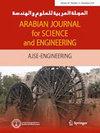Rock Typing and Reservoir Quality Analysis of the Abu Madi Reservoir: Distribution Prediction Using Artificial Neural Networks in the West El Manzala Area, Onshore Nile Delta, Egypt
IF 2.6
4区 综合性期刊
Q2 MULTIDISCIPLINARY SCIENCES
引用次数: 0
Abstract
Abstract In the Nile Delta gas province of Egypt, the Abu Madi Formation is the most promising sandstone gas reservoir. This study aimed to investigate reservoir rock typing and quality by integrating petrophysical and petrographical data, including well logs, image logs, and cores. Furthermore, it sought to predict the permeability and reservoir quality of uncored wells by integrating artificial neural network technique with core analysis data and evaluate the effectiveness of this approach as an exploration tool in the West El Manzala area. The core petrography revealed the presence of microfacies consisting of arenites and wackes. The measured porosity, permeability, and pore sizes obtained from the cores, along with the parameters of the reservoir quality index, normalized porosity, and flow zone indicator, indicated that the Abu Madi reservoirs could be subdivided into three categories based on reservoir quality. High reservoir quality (RT-I) is characterized by megapores within the hydraulic flow unit (HFU-1) associated with bioturbated coarse to gravelly sandstone facies. Moderate reservoir quality (RT-II) is characterized by macropores within the hydraulic flow unit (HFU)-II associated with massive coarse to gravelly sandstone facies. Poor reservoir quality (RT-III) was characterized by mesopores within the HFU-III hydraulic flow unit related to laminated silty mudstone facies. The findings of this study demonstrate that the combination of reservoir rock typing and artificial neural networks is an extremely successful method for petroleum exploration in the West El Manzala region.埃及尼罗河三角洲西El Manzala地区Abu Madi油藏岩石分型与储层质量分析:基于人工神经网络的分布预测
在埃及的尼罗河三角洲天然气省,Abu Madi组是最有潜力的砂岩气藏。该研究旨在通过综合岩石物理和岩石学数据(包括测井、图像测井和岩心)来研究储层岩石类型和质量。此外,通过将人工神经网络技术与岩心分析数据相结合,试图预测未取心井的渗透率和储层质量,并评估该方法作为West El Manzala地区勘探工具的有效性。岩心岩石学显示存在由砂质岩和碎屑岩组成的微相。通过岩心孔隙度、渗透率和孔径测量,结合储层质量指数、归一化孔隙度和流区指标,将Abu Madi储层按储层质量划分为3类。高储层质量(RT-I)以水力流动单元(HFU-1)内的巨孔为特征,并伴有生物扰动的粗砂砂岩相。中等储层质量(RT-II)以水力流动单元(HFU -II)内的大孔隙为特征,并伴有块状粗砂砂岩相。储层质量差(RT-III)的特征是与层状粉砂质泥岩相相关的HFU-III水力流动单元中存在介孔。研究结果表明,储层岩石分型与人工神经网络相结合是西El Manzala地区油气勘探的一种非常成功的方法。
本文章由计算机程序翻译,如有差异,请以英文原文为准。
求助全文
约1分钟内获得全文
求助全文
来源期刊

Arabian Journal for Science and Engineering
MULTIDISCIPLINARY SCIENCES-
CiteScore
5.70
自引率
3.40%
发文量
993
期刊介绍:
King Fahd University of Petroleum & Minerals (KFUPM) partnered with Springer to publish the Arabian Journal for Science and Engineering (AJSE).
AJSE, which has been published by KFUPM since 1975, is a recognized national, regional and international journal that provides a great opportunity for the dissemination of research advances from the Kingdom of Saudi Arabia, MENA and the world.
文献相关原料
| 公司名称 | 产品信息 | 采购帮参考价格 |
|---|
 求助内容:
求助内容: 应助结果提醒方式:
应助结果提醒方式:


